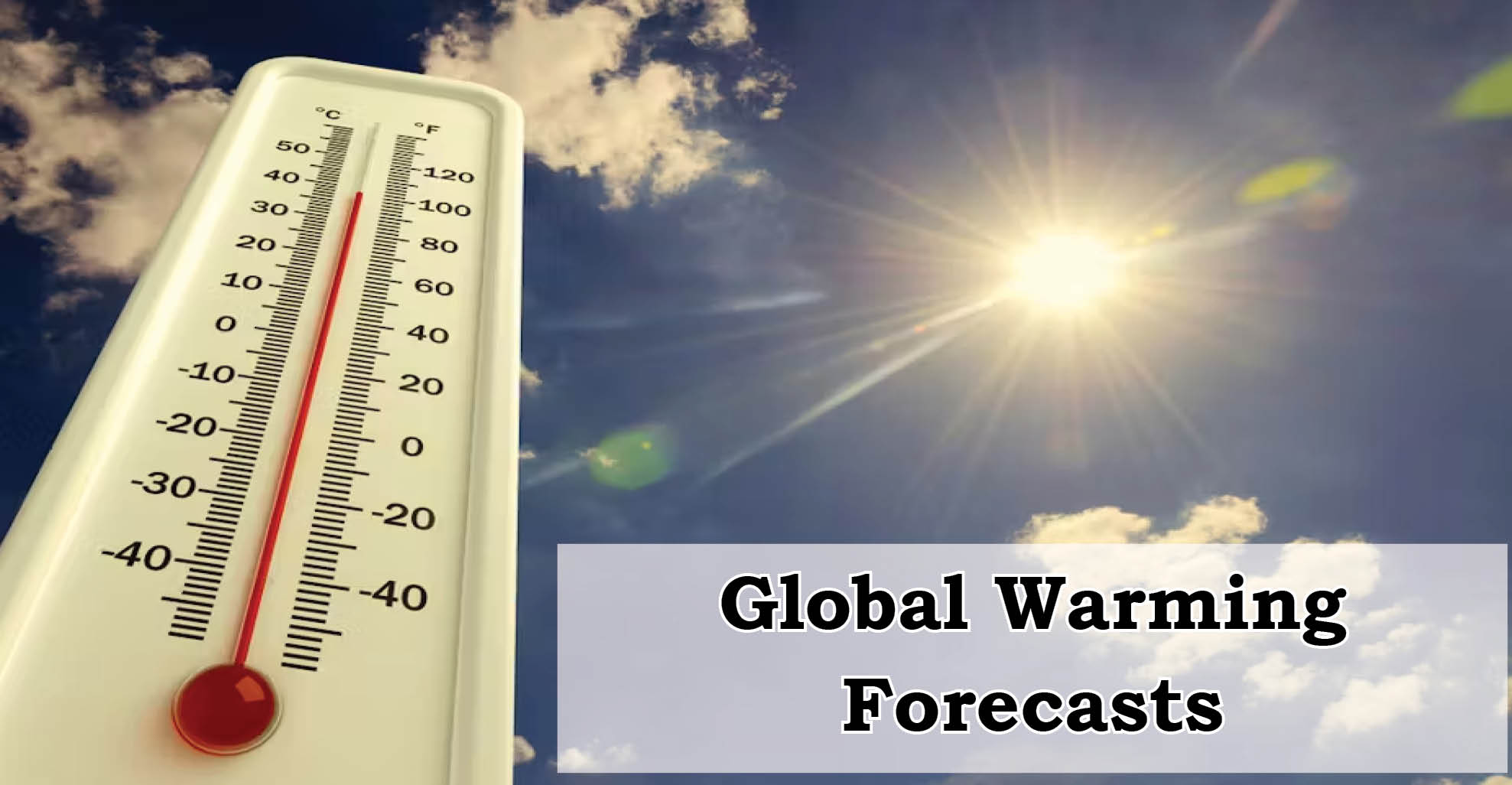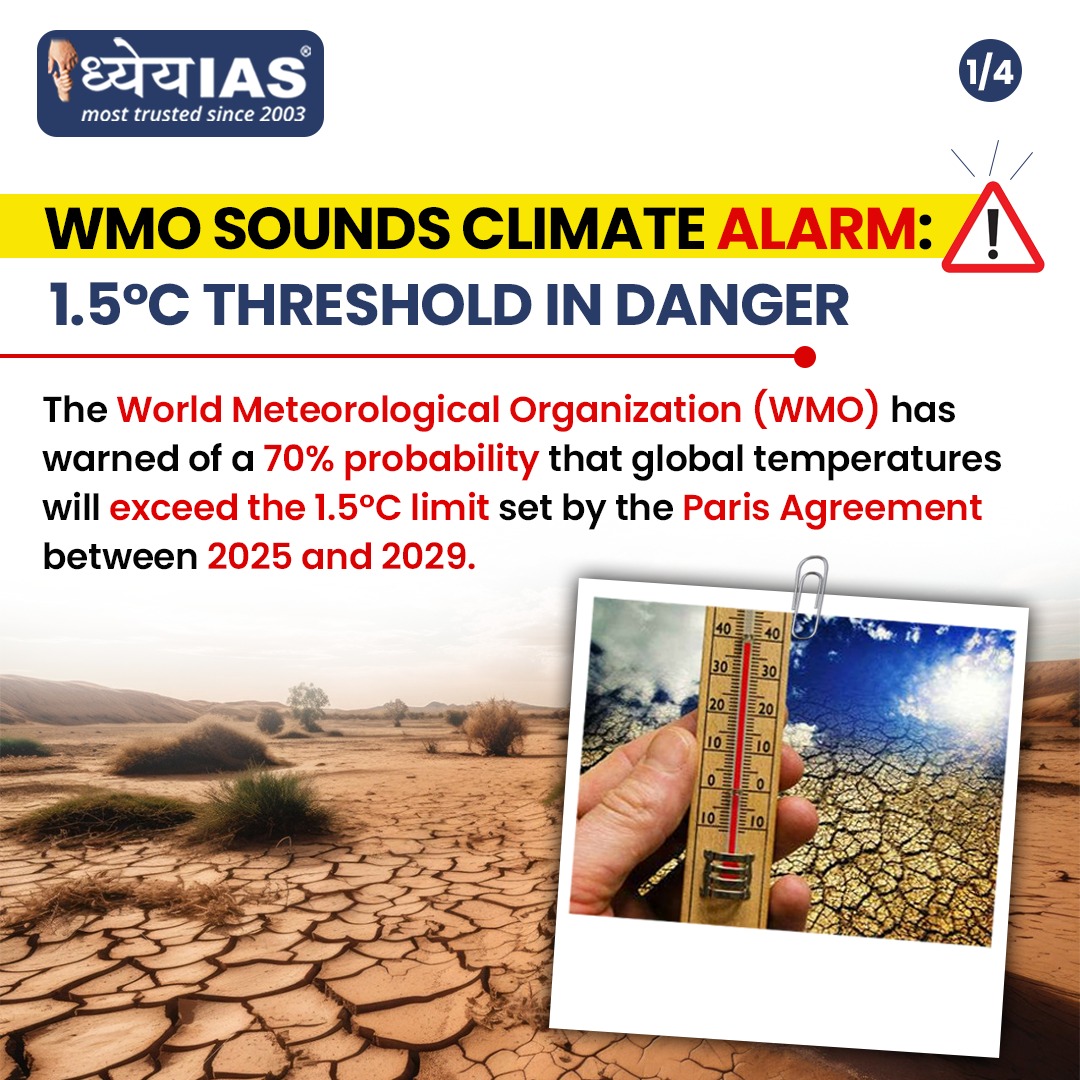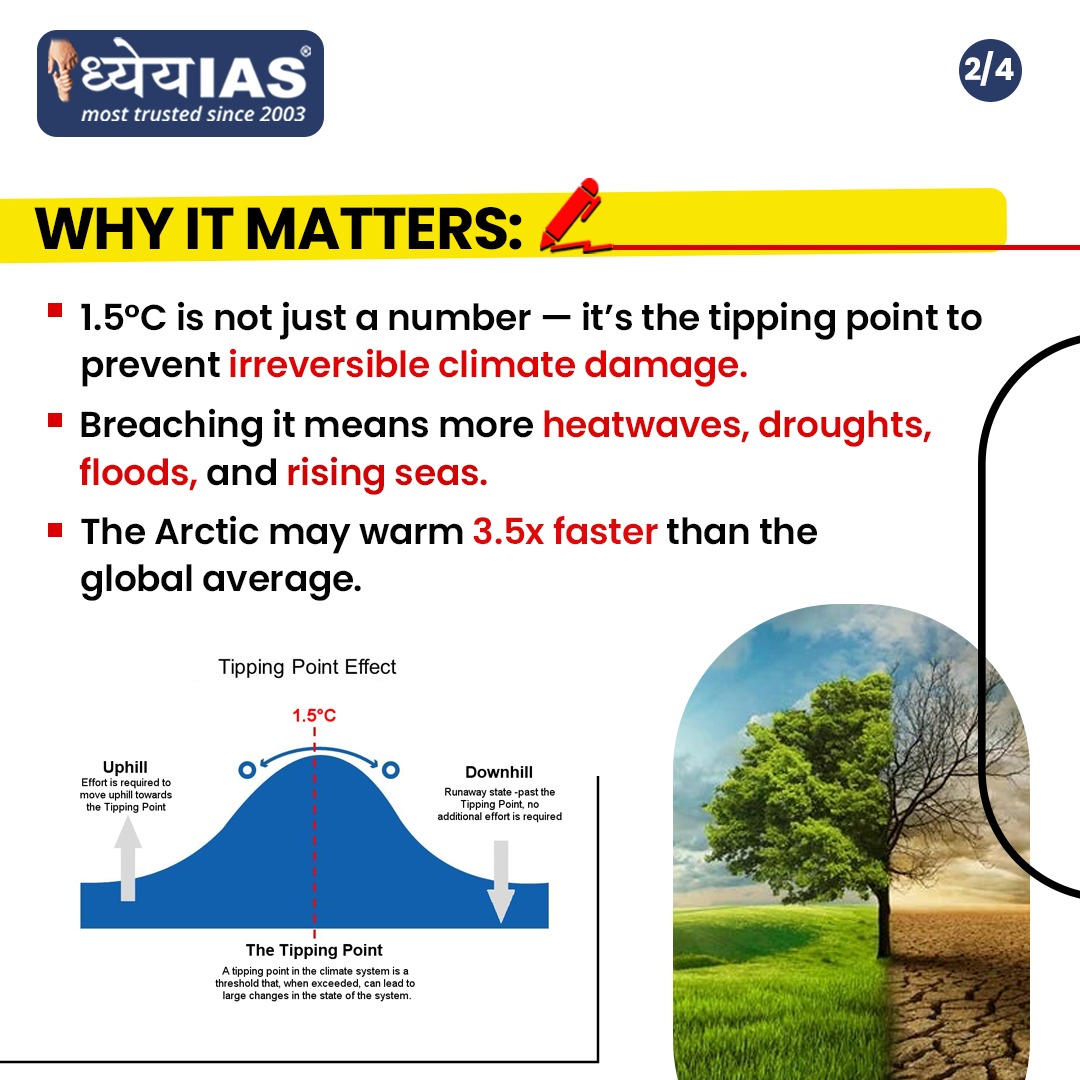The Earth is rapidly approaching a critical climate milestone. According to the latest report by the World Meteorological Organization (WMO), a specialized agency of the United Nations, there is now a 70% chance that the global average temperature between 2025 and 2029 will exceed the 1.5°C warming threshold established under the 2015 Paris Agreement. This probability underscores mounting concerns among climate scientists that global efforts to limit warming are falling short.
The 1.5°C Target: A Climate Tipping Point:
The 1.5°C benchmark refers to a temperature increase above pre-industrial levels (1850–1900). It was adopted as a key target in the Paris Climate Accord to avoid the most severe consequences of climate change. The rationale is grounded in scientific assessments showing that the risks of extreme weather, sea level rise, and biodiversity loss become significantly more pronounced beyond this point. However, recent trends and rising carbon dioxide (CO₂) emissions have led many experts to question the attainability of this goal.
Key Highlights of the report:
According to WMO’s modelling ensemble, the global average near-surface temperature is likely to range between 1.2°C and 1.9°C above pre-industrial levels for each year between 2025 and 2029.
There is an 86% chance that the 1.5°C threshold—central to the Paris Agreement—will be temporarily breached in at least one year during this period. The five-year average itself has a 70% chance of crossing that mark.
Importantly, the Paris climate goal refers to sustained long-term warming rather than short-term spikes. But these temporary exceedances are becoming more frequent and severe, reflecting the steady march of anthropogenic climate change.
Even more concerning: there is now a non-zero (1%) probability that global warming could cross 2°C in at least one year before 2029. While still unlikely, this would mark a grave climate tipping point if realized.
Recent Trends:
The report designates 2024 officially as the warmest year in recorded history, with the global mean temperature reaching 1.55°C above pre-industrial levels. Warming was widespread across continents, especially in North America, Europe, North Africa, and the tropics.
The period 2020–2024 featured strong La Niña conditions, which typically suppress global temperatures slightly—making the 2024 record all the more alarming.
Regional Climate Outlooks: Uneven Warming, Shifting Rainfall:
The report warns that almost every region on Earth is likely to experience above-average temperatures during 2025–2029. Northern Hemisphere land areas are projected to warm faster, and the Arctic is expected to see winter anomalies exceeding +2.4°C, nearly four times the global average.
In terms of rainfall, patterns show both floods and droughts becoming more regionally entrenched:
· The African Sahel, northern Europe, Alaska, and northern Siberia are expected to be wetter than average during boreal summer months.
· The Amazon Basin is likely to experience prolonged dry conditions, deepening ecological stress in the world’s largest rainforest.
· South Asia is predicted to remain in a phase of anomalously wet monsoons, though individual years may vary. The model suggests an 82% chance of above-average rainfall across the 2025–2029 monsoon seasons.
Precipitation predictions are less certain than temperature projections, but the broad trends align with established patterns under a warming climate—more rain at high latitudes and more dryness in tropical and subtropical belts.
Oceanic Conditions and Climate Variability:
- The El Niño–Southern Oscillation (ENSO) is predicted to remain in a neutral to weakly negative phase, with no dominant El Niño or La Niña expected over the five-year span.
- The Atlantic Multidecadal Variability (AMV) is projected to stay positive, reinforcing warming in the North Atlantic and possibly influencing African and European rainfall.
- Meanwhile, the Pacific Decadal Variability (PDV) is forecast to remain in a negative phase, consistent with trends observed since the 1990s.
Sea Ice: Arctic Decline Accelerates
· March (maximum ice extent) and September (minimum extent) sea ice levels are both expected to drop significantly between 2025 and 2029.
· Losses are expected in key regions including the Barents Sea, Bering Sea, and Sea of Okhotsk.
· September forecasts show widespread decline across all normally ice-covered regions, with high confidence in most zones.
In Antarctica, sea ice trends remain harder to model, but predictions suggest a continued reduction in September ice extent, particularly along the Ross Sea.
Earth System Indicators: Mixed Signals, Low Confidence in Some Areas
The report also touches on key climate system components:
· The Atlantic Meridional Overturning Circulation (AMOC)—vital for heat transport—may weaken slightly, although observational data are insufficient to validate the forecast with confidence.
· The Antarctic Oscillation (SAM) and Arctic Oscillation (AO) are projected to remain positive, potentially reshaping jet streams and mid-latitude storm tracks.
Broader Impacts and Warnings
The decade from 2014 to 2024 has been the warmest on record, with Ko Barrett, WMO Deputy Secretary-General, warning of a “growing negative impact” on ecosystems, economies, and daily life. These include:
· Increased frequency and intensity of heatwaves, floods, and droughts.
· Heightened stress on global food and water systems.
· Accelerated loss of biodiversity and degradation of ecosystems.
· Greater economic costs related to climate adaptation and disaster response.
About World Meteorological Organization (WMO)
The WMO is a specialized agency of the United Nations (UN) responsible for weather, climate, water, and related environmental issues. It is located in Geneva, Switzerland
· Originated from the International Meteorological Organization (IMO), founded in 1873.
· Established in 1950, WMO became the UN’s specialized agency for meteorology (weather and climate), operational hydrology, and related geophysical sciences..
Governance
· World Meteorological Congress: The top decision-making body, made up of all members. It meets at least once every four years to set policies and regulations.
· Executive Council: A 36-member body that meets yearly to carry out the Congress’s policies.
· Secretariat: Led by a Secretary-General (appointed for four years), it handles the organization’s administration.
· It has 193 Members: 187 countries and 6 territories, each running their own national meteorological services.
Conclusion:
The probability of Earth exceeding the 1.5°C warming limit—once a worst-case scenario—is fast becoming a near-certainty. While individual years breaching this threshold may not constitute a permanent violation of the Paris goal, the persistent upward trend strongly suggests that current mitigation efforts are inadequate. The scientific community now calls for an urgent re-evaluation of global climate policies, faster decarbonization, and significantly enhanced commitments under future UNFCCC climate negotiations.
| Main question: The WMO's latest climate projections warn of regionally entrenched risks of both floods and droughts between 2025 and 2029. In this context, critically analyse the implications of such dual climate stress on water and food security in developing countries |









